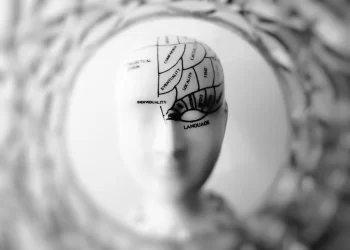The term “aurat”, commonly used to refer to a woman in the Hindi-Urdu speaking world, comes from classical Persian, borrowed from Arabic (ʿawra’), which roughly means “genitals” or “nudity”. The entered through Persian into “Old Hindi”, the earliest stage of “khariboli” or Delhi Dialect, the linguistic ancestor of both modern Hindi and modern Urdu, which explains the wide currency of the term among the speakers of Hindi and Urdu both although technically Hindi and Urdu aren’t different languages, which, however, is a different discussion altogether.
I was not aware of the etymological roots of “aurat” before December 19, 2021, which was when I quickly looked up the origin of the word after receiving a WhatsApp text from a seemingly alarmed individual (let’s call the person “ABC” hereinafter), who found it outrageous and was “shocked” to find that “the word woman is associated with defectiveness, genitalia and nudity, while we worship yoni at Kamakhaya and Shiv lings in every temple”. ABC’s outrage was perfectly understandable, particularly because she was a young woman with modern sensibilities.
However, the article ABC had shared alongside her outrage described “aurat” as an “Urdu” word, which was odd because it’s a Hindi-Urdu word, and serious linguists wouldn’t misdescribe it as exclusively belonging to Urdu. But the misdescription could be because the words coming into Hindi-Urdu through the Arabic-Persian route and of Arabic, Persian or Turkish origin are generally looked upon as “Urdu words” whereas those coming through the Sanskrit route and of Sanskrit, Prakrit or Pali origin are called “Hindi words”. Forgivable error then although it could just as well be part of a sinister design.
To ABC’s credit, she asked, “It does not signify anything, or does it?” Of course, regardless of the origin, the word is not used in any derogatory sense; it just means “woman”. And words, in general, are rarely tied to their origin; they are living, evolving entities. “Gay” hardly means “happy”, “merry” or “lively” any longer, or, for that matter, “wanton”, “lewd” or “lascivious”. So there was no reason to be alarmed about some “hidden meaning” there, I assured her.
However, her attempt to contradistinguish something in the origin of the term “aurat” with the worship of “yoni at Kamakhya and shiv lings in every temple” was a different problem altogether, and a problem indeed. “This kind of comparison is not only misplaced but is also completely false and propagandist. We worship those things for very different reasons,” I said. Apparently, ABC understood the distinction and did not press the argument or seek clarification.
Kamakhya Temple is believed to be the place where the yoni (genetalia, including the womb) of goddess Sati fell after Lord Vishnu dismembered her body into 51 pieces with his Sudarshan Chaktra to calm a grief-stricken Lord Shiva, who was performing a destructive tandav, grieving the sudden death of Sati after the goddess had committed self-immolation, protesting the dishonour of Lord Shiva, by throwing herself into the yajna kunda at the yajna organized by her father, Dakha. Corresponding to the number of the dismembered body parts, there are 51 Shakti Peethas, most of which are in India but fifteen are elsewhere (seven in Bangladesh, three in Pakistan, three in Nepal, one in Tibet and one in Sri Lanka). Kamakhya Temple is one of the four Adi Shakti Peethas recognized by several religious texts, including the Shiva Purana, the Devi Bhagavata, and the Kalika Purana.
So yoni is worshipped at Kamakhya Temple not so much as female genitalia as a dismembered organ of goddess Sati, like the other body parts worshipped at different Shakti Peethas. Since the ancient Hindus were not squeamish about sex, sexuality or sexual organs, the yoni has not been excluded from worship. The same unabashed acceptance and celebration of sexuality are manifest in the widespread worship of Shivalinga (Shivalingam), which is almost invariably depicted and worshipped in union with yoni, representing coitus and symbolizing cosmic creation and regeneration with the world conceived as a product of the union of Prakriti and Purusha, the form and the formless, the microcosm and the macrocosm, the masculine and the feminine.
The worship of yoni at Kamakhya and of shivalingam all over, remarkable as they are in their own right, have nothing to do with the treatment of women in Hindu religious texts or among the Hindus in the lived reality, for yoni worship at Kamakhya has mythological reasons whereas shivalingam worship has its roots in religious metaphysics of Hinduism.
ABC found the origin of “aurat” “derogatory” to women, which regrettably it is, and tried to contrast it with yoni and shivalingam worship, which contrasting is misplaced and fails because neither is a celebration of womanhood, the involvement of yoni regardless. But the bigger and more serious question is, why should such a comparison be made anyway, and to prove what? To prove that “we” are better than “them”, in this case, in “our” treatment of women? And even if it were proved, and when “we” were done patting “our” backs, would it have magically removed all the discrimination and exploitation that women in general, including “ours”, face and fight every single day? Of course not. So why this pointless, fruitless “us versus them”? We’ll return to the “why” of it because its pointlessness and fruitlessness should be reasons enough to stop it, but it continues; so there must be something other than reason fueling it on.
As for the treatment of women, there is no culture or religion in the world that has not systematically oppressed and subjugated women at one time or another. Oppressive patriarchy has been universal at all times across the world. “All it takes is looking at one’s own culture to know that nobody has been any better than anybody else in these matters,” I said to ABC in this regard. But ABC was not stopping at that. Thankfully.
…to be continued
Originally published as part of my monthly column Street Lawyer in the February 2022 Issue of Lawyers Update (Vol XXVIII, Part 2).






